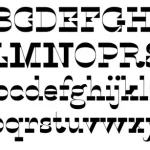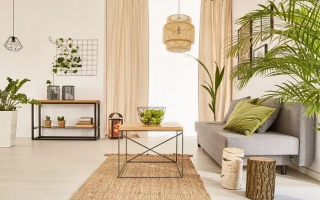When we think of interior design today, we think of fancy homes in glossy magazines. But like everything else, interior design began somewhere. The earliest evidence we have of interior design dates back to prehistoric times when man first began to build permanent settlements. Even though they lived in caves, there is significant evidence in the form of cave paintings that point towards interior design. This early form of decoration was relatively primitive but as we shall see, it built the foundation necessary the creative interior design we know today.
Egyptians, Greeks and Romans
Egyptians in particular were well known for their beautiful designs on ornate murals. These murals decorated temples and tombs while at the same time telling the story of the people living at the time. Many of the workers who built and carved these murals and the buildings housing them lived in ordinary homes even as their best interior design work decorated the homes of rulers or the royal family as a way to appease their gods. These murals are still a major part of Egyptian society and still wow people who see them for the first time.
When the Romans and the Greeks took over Ancient Egypt, they brought with them their unique sense of architectural styles and taste. The democracy introduced by the Greeks meant that every citizen had the right to infuse their own personal tastes into the design of their homes. Strict rules for the construction of the massive Greek pillared buildings we marvel at today were also introduced by the Greeks.
Interior Design in Early Europe
Between the 13th and 15th Century distinctive designs began to emerge all over Europe. Gothic cathedrals we built around Europe as did the beauty of the designs of the Italian Renaissance. This period also focused on large buildings and all carvings and decorations were mainly based on religion. But no one can deny the beauty of the many murals, carvings, and tapestries created during this period.
18th and 19th Century
The 18th and 19th Centuries saw significant growth in interior design with new ideas and new applications making their mark in the world. It was in this period that we see Baroque’s artistic exaggeration, the industrial revolution, Art Deco and Art Nouveau, all of which opened up the world of interior design to the common man. It was also at this time that some of the top interior design and fashion magazines were introduced, opening up the world of design to the average person. Easier travel also made it easier for a mixture of different styles from far off places to influence local tastes and styles.
20th and 21st Century
The industrial revolution opened up the world of design more than most people know. By the 20th century, modernization would mean that more and more people had not just the desire for great interior design, but also the means to accomplish what they wanted. It was the beginning of fame for designers who used their creativity and talent to transform a living or working space into anything the client desired. As countries recovered from world wars, the relative calm led to the growth of people’s incomes and an influx in suburban homes. As prosperity grew, more people began to indulge in interior design as a way to satisfy their personal interest. TV shows like Changing Rooms also began to influence our idea of the ideal home even as vintage styles from earlier times began to be revived.
Today, old vintage styles continue to be incorporated into modern designs. People are more likely to experiment with new designs and features. This has led to an interior design industry that continues to grow with more designs and trends coming out every year. For more inspiration on the possibilities of interior design check out this Edinburgh interior design studio










